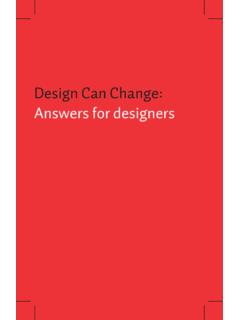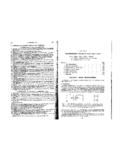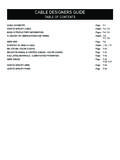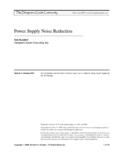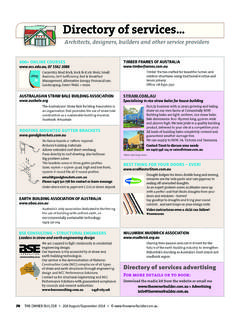Transcription of HUMAN FACTORS FOR DESIGNERS OF EQUIPMENT PART 5: …
1 Ministry of Defence INTERIM. Defence Standard 00-25 (PART 5) / ISSUE 1 29 M a y 1 9 9 2. HUMAN FACTORS . FOR DESIGNERS OF EQUIPMENT . PART 5: STRESSES AND HAZARDS. INT DEF STAN 00-25 (PART 5)/1. AMENDMENTS ISSUED SINCE PUBLICATION. AMD NO DATE OF TEXT AFFECTED SIGNATURE &. ISSUE DATE. Revision Note Historical Record Arrangement of Defence Standard 00-25. HUMAN FACTORS for DESIGNERS of EQUIPMENT Part 1 - Introduction Part 2 - Body Size Part 3 - Body Strength and Stamina Part 4 - Workplace Design Part 5 - Stresses and Hazards Part 6 - Vision and Lighting Part 7 - Visual Displays Part 8 - Auditory Information Part 9 - Voice Communication Part 10 - Controls Part 11 - Design for Maintainability Part 12 - Systems Part 13 - HUMAN Computer Interface Design Guidelines Two or more Parts may apply to any one EQUIPMENT and it is therefore essential that all Parts be read and used where
2 Appropriate. INT DEF STAN 00-25 (PART 5)/1. HUMAN FACTORS FOR DESIGNERS OF EQUIPMENT . PART 5: STRESSES AND HAZARDS. PREFACE. i This Part of the Defence Standard takes into account some of the main environmental FACTORS which affect work efficiency and personnel well-being. These should be considered by DESIGNERS in defence EQUIPMENT applications. ii This Part of the Defence Standard is published under the authority of the HUMAN FACTORS Subcommittee of the Defence Engineering EQUIPMENT Standardization Committee (DEESC). iii This Standard should be viewed as a permissive guideline, rather than as a mandatory piece of technological law.
3 Where safety and health is concerned, particular attention is drawn to this Standard as a source of advice on safe working limits, stresses and hazards etc. Use of this Standard in no way absolves either the supplier or the user from statutory obligations relating to health and safety at any stage of manufacture or use. iv Users of this Standard shall note that some material may be claimed to be subject to copyright in this or other countries. Copyright where known is acknowledged. v This Standard has been devised for the use of the Crown and its contractors in the execution of contracts for the Crown.
4 The Crown hereby excludes all liability (other than liability for death or personal injury). whatsoever and howsoever arising (including, but without limitation, negligence on the part of the Crown its servants or agents) for any loss or damage however caused where the Standard is used for any other purpose. vi This Standard has been agreed by the authorities concerned with its use and shall be incorporated whenever relevant in all future designs, contracts, orders etc and whenever practicable by amendment to those already in existence.
5 If any difficulty arises which prevents application of the Defence Standard, the Directorate of Standardization shall be informed so that a remedy may be sought. vii Any enquiries regarding this Standard in relation to an invitation to tender or a contract in which it is incorporated, are to be addressed to the responsible technical or supervising authority named in the invitation to tender or contract. viii This Part of the Defence Standard is being issued as an INTERIM. Standard. It shall be applied to obtain information and experience of its application.
6 This will then permit the submission of observations and comments from users using DGDQA Form No 0825 enclosed. A review of this INTERIM Standard should be carried out within 12 months of publication. Based on the comments received the author and/or the committee responsible for the preparation of the Defence Standard shall judge whether the INTERIM Standard can be converted to a normal Standard or decide on what other action should be taken. 1. INT DEF STAN 00-25 (PART 5)/1. CONTENTS PAGE. Preface 1. Section One. General 0 Introduction 5.
7 1 Scope 5. 2 Related Documents 5. 3 Definitions 6. Section Two. Submarine Atmosphere 4 Introduction 7. 5 Control 7. 6 Maximum Permissible Concentrations (MPCs) 8. Section Three. Acceleration and Deceleration 7 Acceleration 9. Section Four. Wind 8 General 16. Section Five. Motion 9 Whole Body Motion Phenomena 17. Section Six. Vibration and Shock 10 Vibration 21. Section Seven. Weightlessness 11 General 23. Section Eight. Effects of Noise 12 General 26. Section Nine. Darkness and Dazzle 13 General 30. Section Ten. Effects of Radiation 14 Ionizing Radiation 31.
8 Section Eleven. Chemical and Biological Contaminants 15 General 34. Section Twelve. Safety Standards 16 Guidelines 36. 2. INT DEF STAN 00-25 (PART 5)/1. CONTENTS (Contd) PAGE. Section Thirteen Thermal Environment 17 General 37. Section Fourteen Combined Environmental Stressors 18 Definition of Terms 41. Section Fifteen Effects of Sleep Loss 19 Introduction 47. Annex A List of Related Documents and Publications A-1. Annex B Sources of Advice B-1. Table 1 Relation Between Sound Level and Duration for an 29. L e q of 85 dB(A). Table 2 Typical Responses to Effective Temperature (ET) 37.
9 Table 3 Interpretation of Windchill Index (KO) 39. Table 4 Stressor Interactions 43. Figure 1 Dynamic Response to a Triangular Acceleration Pulse 12. Depending Upon the Ratio of Pulse Length (t) to the Natural Period of the System Figure 2 HUMAN Tolerance to Gx and Gy Impacts Under Various 13. Conditions of Body Restraint Figure 3 HUMAN Tolerance to Gx and Gz Impacts Under Various 14. Conditions of Body Restrains 3. Blank Page INT DEF STAN 00-25 (PART 5)/1. HUMAN FACTORS FOR DESIGNERS OF EQUIPMENT . PART 5: STRESSES AND HAZARDS. Section One.
10 General 0 Introduction There is an optimum environment in which man works most effectively. Changes from this optimum, if sufficiently large, result in adverse effects. These may appear as discomfort, degradation in job performance, physiological changes or ill-health. Performance limits will normally lie between comfort and physiological criteria. However, in some circumstances discomfort will itself result in performance decrement and thus to preserve performance the stricter comfort criterion is to be employed. In other circumstances the physiological limit must be employed as some environmental substances can have imperceptible effects which will render an individual incapable of rational perception of changes in his own behaviour.

